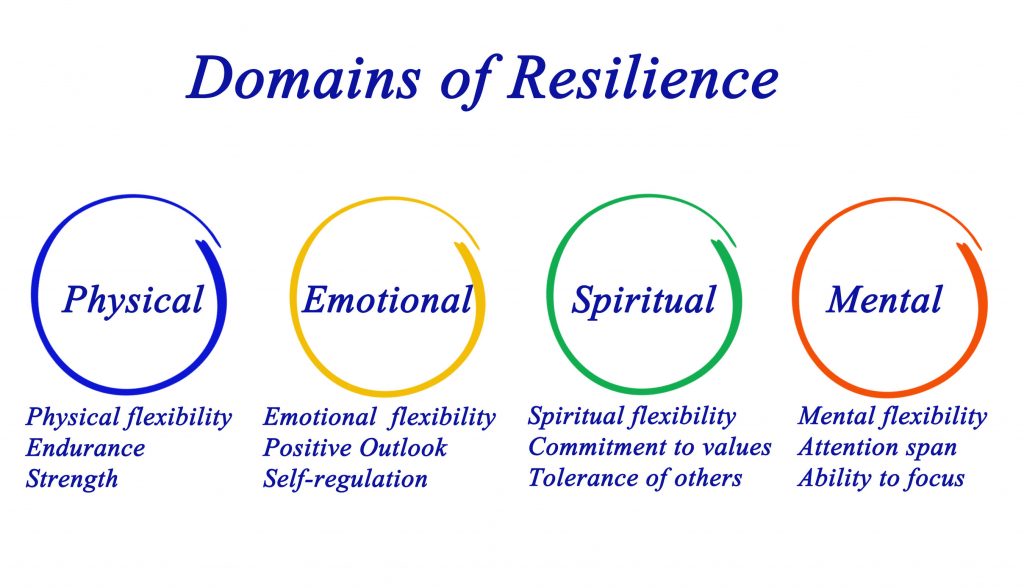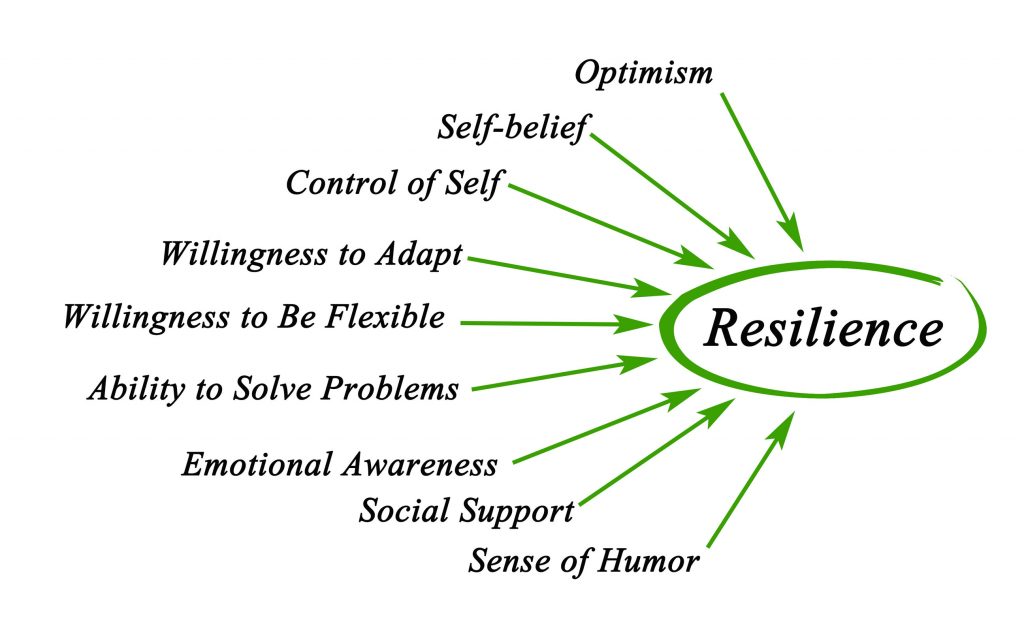Don’t just survive, thrive
Bounce Back
Keep moving forward
Come back stronger
Help someone along the way

What is Resilience?
Resilience is the quality of recovering quickly from failure and adversity, and not only returning to the status quo but actually using the opportunity to grow and further your personal development. Resilience is not the absence of stress or trauma. It is working through the stress and trauma we learn and demonstrate resilience.
People who are resilient not only bounce back after a setback, they come back stronger and wiser. They look for the positive in any situation, and they excel in finding the lessons with each negative experience, so they can use it and apply it in their future plans.
Resilience training focuses on four areas, including emotional, cognitive and mental, physical, and spiritual resilience. Training in these areas can improve your resiliency, enhance your quality of life, and decrease your stress and anxiety by teaching you to view life’s inevitable challenges as opportunities.
Benefits of Resilience Training
People with low resilience tend to focus on negative outcomes and problems. Stresses can compound, and some people can eventually feel overwhelmed. Using a coping mechanism that will aggravate problems, such as drinking or binge eating, is also a sign of low resilience.
The ability to reduce negative emotions faster following an event
Find purpose in life
A decrease negative thought
An increase in overall quality of life
The ability to manage your chronic conditions better

Bounce Back
Resilience training focuses on four areas, including emotional, cognitive and mental, physical, and spiritual resilience. Training in these areas can improve your resiliency, enhance your quality of life, and decrease your stress and anxiety by teaching you to view life’s inevitable challenges as opportunities.
Resilience Training
Resilience training focuses on four areas, including emotional, cognitive and mental, physical, and spiritual resilience. Training in these areas can improve your resiliency, enhance your quality of life, and decrease your stress and anxiety by teaching you to view life’s inevitable challenges as opportunities.
Resilience Factors
The first step is the hardest because it’s the scariest. It’s the one that actually signifies change – and change is scary. But, with us by your side we will help you understand what stops you from bouncing back, recognise the strengths you have that you have overlooked, and find ways to cope better.
The skills that resilience training seeks to teach and develop are:
Higher self-confidence and self-esteem
Problem-solving skills
Setting realistic goals
Accepting changes
Ability to manage emotions and impulses
Communication skills
Ability to connect with others
Taking positive steps to carry out plans
